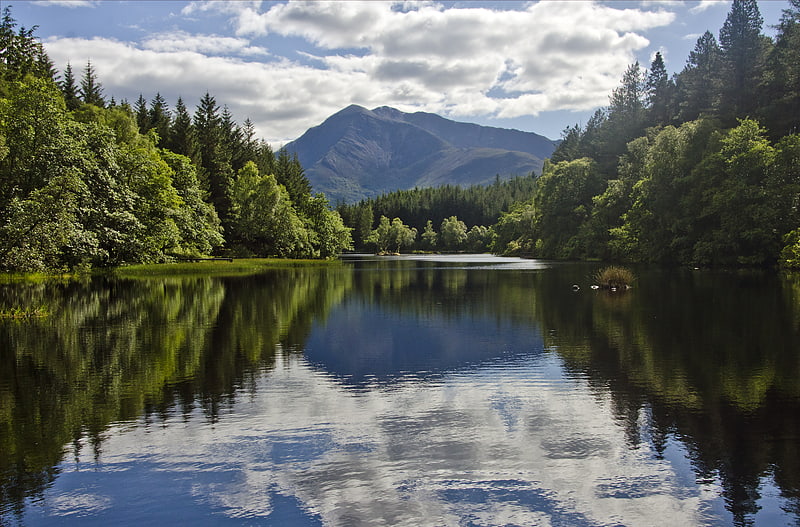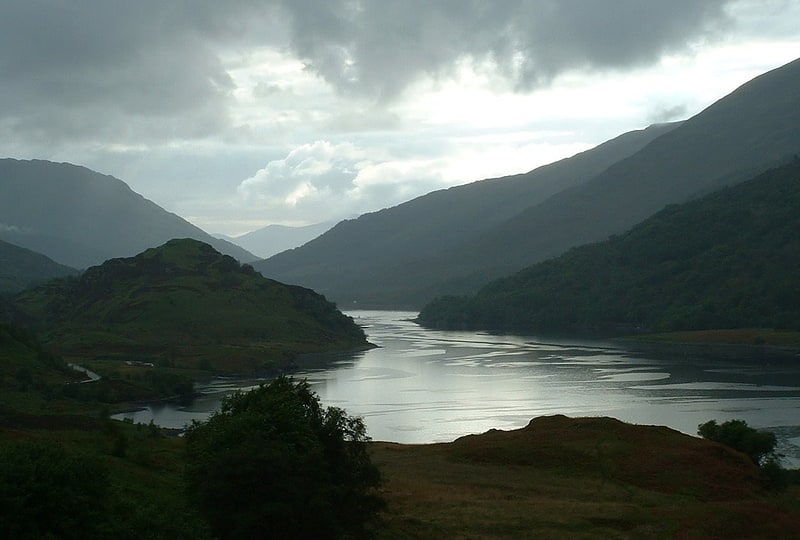Discover 4 hidden attractions, cool sights, and unusual things to do in Glencoe (United Kingdom). Don't miss out on these must-see attractions: Henderson Stone, Glencoe Lochan, and Glencoe Massacre Memorial. Also, be sure to include Loch Leven in your itinerary.
Below, you can find the list of the most amazing places you should visit in Glencoe (Scotland).
Table of Contents
Henderson Stone

The Henderson Stone is a granite boulder in a field in the Glencoe area of Scotland. Clach Eanruig is translated alternatively as Henderson Stone or Henry's Stone.[1]
Glencoe Lochan

Glencoe Lochan is a tract of forest located just north of Glencoe village in the Scottish Highlands. It was planted in the 1890s by Donald Alexander Smith, 1st Baron Strathcona and Mount Royal, with trees transplanted from the Pacific Northwest of Canada.
After acquiring the Glencoe Estate in 1895, Smith and his wife, Isabella Sophia Hardisty, moved from Canada to Scotland. Soon after their arrival, Isabella became increasingly homesick for her ancestral lands in Canada. In an attempt to abate his wife's depression, Smith had this forest painstakingly planted, and granted it to her as a private refuge.
The lochan is currently under the care of the Forestry Commission. There are trails around it and fishing for brown trout is possible with a permit purchased locally.[2]
Glencoe Massacre Memorial

The Massacre of Glencoe took place in Glen Coe in the Highlands of Scotland on 13 February 1692. An estimated 30 members and associates of Clan MacDonald of Glencoe were killed by Scottish government forces, allegedly for failing to pledge allegiance to the new monarchs, William III and Mary II.
Although the Jacobite rising of 1689 was no longer a serious threat by May 1690, unrest continued in the remote Highlands which consumed resources needed for the Nine Years' War in Flanders. In late 1690, the Scottish government agreed to pay the Jacobite clan chiefs a total of £12,000 in return for swearing an oath of loyalty to William and Mary; however, disagreements over how to divide the money meant by December 1691 none of them had taken the oath.
Under pressure from William, Secretary of State Lord Stair decided to make an example as a warning of the consequences for further delay. The Glencoe MacDonalds were not the only ones who failed to meet the deadline, as the Keppoch MacDonalds did not swear until early February. The reason for their selection is still debated, but appears to have been a combination of internal clan politics, and a reputation for lawlessness that made them an easy target.
While there are examples of similar events in Scottish history, the brutality of the massacre shocked contemporaries. It became a significant element in the persistence of Jacobitism in the Highlands during the first half of the 18th century, and remains a powerful symbol for a variety of reasons.[3]
Address: 8 Upper Carnoch, PH49 4HU Glencoe Village
Loch Leven

Loch in the United Kingdom. Loch Leven is a sea loch located on the west coast of Scotland. It is spelled Loch Lyon in Timothy Pont's map of the area and is pronounced Li' un. The local Gaelic pronunciation is Lee' oon
Loch Leven extends 8+3⁄4 miles (14.1 km), varying in width between 220 yards (200 m) and just over 1 mile (1.6 km). It opens onto Camus a' Chois at North Ballachulish, part of Loch Linnhe at its western end. There are nine small islands, some rocky and covered with heather and some just smooth green grass, near the western end of the loch.
The village of Glencoe (Scottish Gaelic: A' Chàrnaich) lies on its southern shore. The burial place of the MacDonald clan of Glencoe lies on an island - Eilean Munde, St.Munda's or St Munn's or Saint Fintan Munnu's Island, opposite the village. The island burial place was also shared by the Camerons of Callart, on the north shore of the loch, the Stewarts of Ballachulish and Appin and other local families.
The village of Kinlochleven at the head of the loch was established when the aluminium smelter was built there during the first decade of the twentieth century. It was originally the hamlets of Kinlochmore (Inverness-shire) and Kinlochbeg (Argyll) either side of the River Leven. A road connecting the village to Glencoe and the south was not constructed until 1922: until this date the village could only be reached from the south by boat or on foot. The road on the north of the loch continues on to Fort William (Scottish Gaelic: An Gearasdan Inbhir Lochaidh), and was built in 1927.
For many years the Ballachulish Ferry plied the route across the mouth of the loch, providing a key link on the A82 between Glasgow and Fort William. In 1975 the Ballachulish Bridge replaced the ferry. Under the bridge lie the narrows of Caolas Mhic Phàdraig. The settlements either side of this point are North and South Ballachulish - Baile a' Chaolais (the settlement on the narrows). There is a fast tidal stream through the narrows, running at up to seven knots at springs; it is wise, therefore, to time and match any passage through the narrows with the tides. Further up the loch, there are several other narrows - principally Caolas na Con - with significant, but diminishing tidal streams. The Caolas na Con represented a considerable barrier to shipping, restricting the size of vessels that could reach Kinlochleven, however in 1907 the channel was dredged and the silt-bearing Allt Gleann a' Chaolais diverted to allow ships bringing alumina to reach the smelter at Kinlochleven.[4]